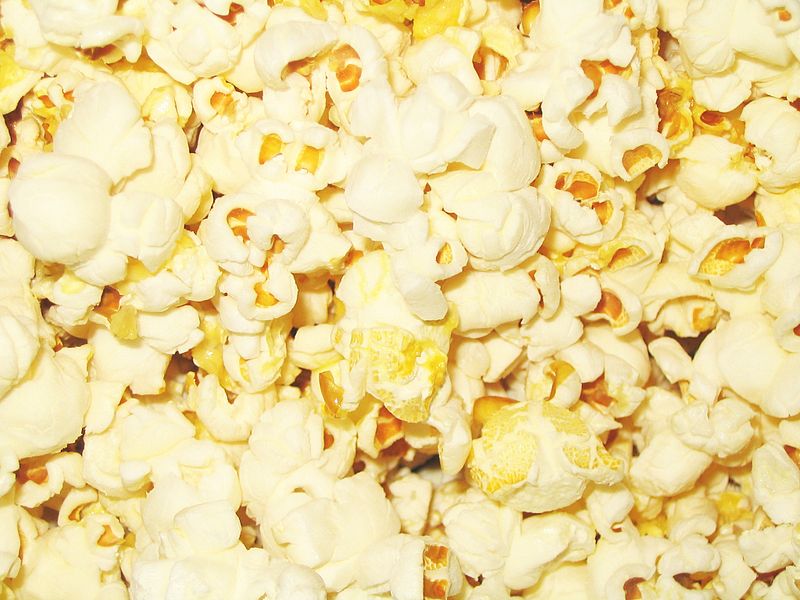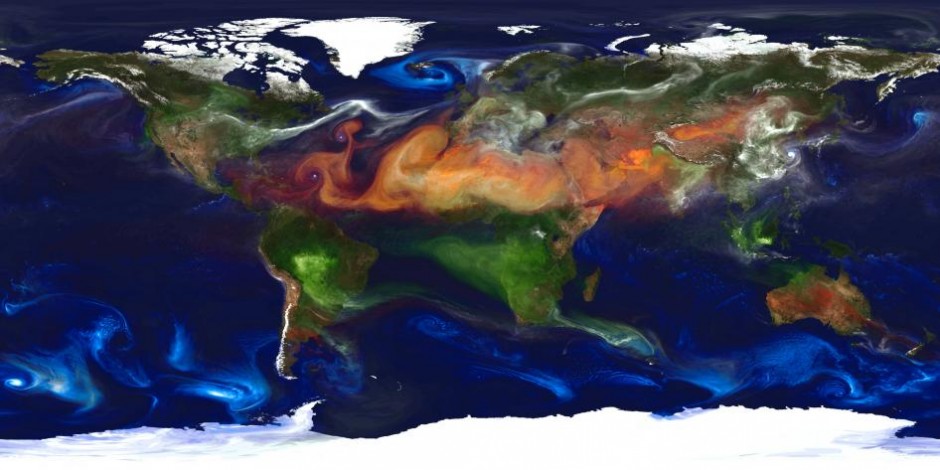Ever wondered how many aerosol particles are emitted by microwaving popcorn? Or how polluted a football match is? I’m going to assume your answer is no but it turns out that science has the answer anyway!
Outdoor air pollution is a significant concern but air pollution indoors and in other enclosed spaces is of comparable importance. A US study estimated that around half of our exposure to aerosol particles occurs indoors. Breathing in aerosol particles is known to cause both long and short term implications for our health. Globally, it is estimated that outdoor air pollution accounts for 2.7-3.5 million deaths every year, while indoor air pollution from burning fuels for heating households ranges from 2.6-4.4 million.
Pass the popcorn
As well as household heating, another source of exposure to aerosol particles indoors is from cooking. Just this week, a paper was published on aerosol particle emissions from microwaving popcorn. One of the main findings of the study was that:
The emitted PM concentrations varied significantly with flavour.
Where PM stands for Particulate Matter, which is another term used for aerosol particles. Butter flavoured popcorn (both Movie-theatre-style and standard) was the worst offender, while fat-free popcorn was the lowest (a win-win health benefit for the fat-free version). The study also found that replacing the standard (greasy) packaging with a brown paper bag, often led to dramatic decreases in the amount of aerosol particles produced. One way of reducing the amount of aerosol particles produced could be to change the packaging.

Source: Wikimedia Commons.
While the general premise of the study sounds somewhat whimsical, there is a serious side to the issue. One of the motivations for the study was that the chemicals released by microwave cooking may have led to former popcorn factory workers suffering from lung disease. The study did conclude that microwaving a single bag would not represent a serious health concern, especially when compared to other household sources. However, the risk would be elevated for people working in manufacturing the popcorn or involved with selling it e.g. in a cinema.
Who ate all the frankfurters?
It isn’t just cooking in the home that can lead to exposure to aerosol particles – sporting events are also an issue. Two recent studies investigated air pollution at a football match in Germany between FSV Mainz 05 and VFL Wolfsburg played at the Coface Arena, which is a 34,034 capacity stadium (the official attendance was 31,069). Measurements inside of the stadium showed very clear signals due to the football match, with aerosol concentrations increasing on average by 5 times the normal levels.
The study identified aerosols related to cooking within the stadium, with the build-up to the match seeing a steady increase up to kick-off. The largest peak in cooking aerosol occurred just before kick-off. Two more peaks were also seen at half-time and full-time.

Source: Wikimedia Commons.
As well as aerosols relating to cooking, the study also showed that cigarette smoke was the major contributor to aerosol concentrations within the stadium. Smoking is permitted within football stadiums in Germany, although there are ongoing discussions regarding banning it. The results of the study suggest that this would be a good idea in terms of local air quality within the stadium, especially considering the well-known risks from inhaling cigarette smoke. The level of cigarette smoke aerosol was much more consistent throughout the match compared with the cooking aerosols. The largest peak was actually at half-time – the German fans in this instance preferring a cigarette to food.
Again, the study sounds somewhat whimsical and I’ve been to conferences where the work is presented and people are quite keen to check out something a little different from the usual conference fare but again there is a more serious aspect to the research. The measured concentrations within the stadium often exceeded targets set by the European Union and World Health Organisation that are designed to limit health effects. This presents an issue for public safety and it is worth bearing in mind that the Coface Arena is relatively small compared to many stadiums.
An aerosol cookbook
The studies above highlight just a few instances where cooking can produce significant quantities of aerosol particles, which can harm our health given prolonged exposure. Exposure to aerosol particles from cooking is often increased by the enclosed space that it occurs in. When we are outside, the atmosphere is quite efficient at dispersing and reducing the amount of pollution in our vicinity – this isn’t so easy in an enclosed kitchen (or football stadium).
Aerosols from cooking sources are not always confined to enclosed spaces, as they have been detected in sizeable amounts in outdoor experiments in several locations such as London, Barcelona and Beijing. Compared to other sources of aerosols such as traffic emissions, cooking aerosols may seem like small-fry, but we are all exposed to these types of particles on a regular basis. Nourishing our understanding of these aerosol particles will help to limit our exposure to them.


